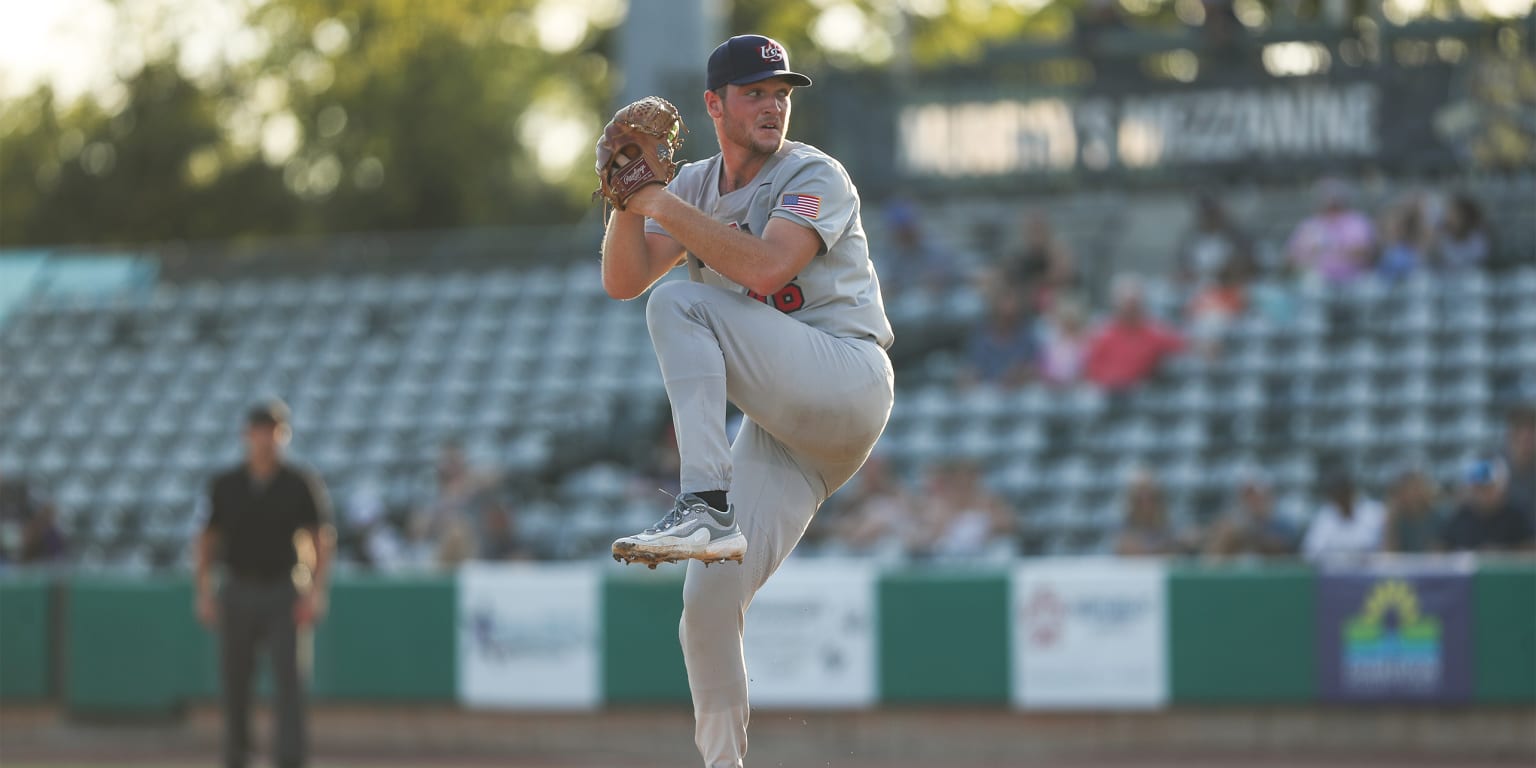Golf
U.S. Open 2024: Pinehurst No. 2 is an ideal test of golf, or a total crapshoot. A debate
Published
7 months agoon
By
Admin
If you could see Golf Digest’s main Slack channel at the moment, you’d understand why we were compellied to have this little debate. The crew usually isn’t this divided and the discourse this heated unless we’re talking white belts.
The subject here is the examination presented this week for the 2024 U.S. Open on Pinehurst No. 2. Some think it’s the ultimate major test because it requires every shot imaginable—with a precision and mental fortitude rarely required to this degree. Others contend that there’s a goofy golf element, with too many quirky factors involved to be a true identifer of the week’s best player.
It would figure that the predominant opinion will hinge on who hoists the trophy on Sunday. Bryson DeChambeau or Rory McIlroy? It’ll be memorable. Matthieu Pavon? Have you heard of Michael Campbell?
For the time being, writers Joel Beall (pro-Pinehurst No. 2) and Tod Leonard (anti) took to their keyboards for a (sometimes) affable debate.
The lack of respectful discourse is a real problem of our society. There is no more exchange of ideas, only the yelling of ours and turning a deaf ear to others. I encourage everyone reading this to talk a little less and listen a little more. I say all that to say this: If you think Pinehurst No. 2 is nothing more than a tricked-up carnival set-up that rewards luck over skill, you shouldn’t be allowed to vote, and we’d all be better off if you walked straight into the ocean.
Is it hard? It is hard. It’s the U.S. Open, it’s supposed to be hard. It requires exactness, and not just in the fairway. The drive has to be in a particular position to allow for the right second shot. Anything failing to meet these prerequisites will be disciplined. Also punishing: the lack of rough around the greens. Whereas the surrounding tall stuff at tour venues allows a player to blast a 60-degree wedge without much trouble, Pinehurst’s run-offs cannot be played in a universal manner. Each requires its own creativity and scheme; it’s why players have used putters, wedges, irons and woods when finding collection areas and sandscape. A sign of a proper course, and nightmare for players who operate on a “paint by numbers” wavelength. The putting surfaces are as agitating as greens can get. They can’t be attacked, but don’t reward defensiveness, either. It’s a setup that tests the cerebral and emotional parts of the game.
But it’s fair, and we know this because no one stopped moving putts or cried about the golf course being lost. There has been nothing artificial about pin positions or conditioning. There are a number of players in red. And not just any players. Look at the leaderboard. Bryson DeChambeau’s won a U.S. Open and finished runner-up at the PGA. Ludvig Aberg also has a runner-up major finish this year. Last we checked Rory McIlroy’s pretty good. Hideki Matsuyama, Patrick Cantlay … Matthieu Pavon won this year at Torrey Pines, a U.S. Open venue. There’s not a pretender in the bunch, and that doesn’t happen by chance.
I’ve seen the complaints, that good shots are not being rewarded. Maybe your concept of a good shot is wrong. A good shot on some holes isn’t going right at the pin, it’s going 30 feet right of it to safely make par. Think the native areas are too fickle? You know, there’s a way to avoid leaving it up to fate. It’s a secret of the pros, but each hole has a wide green/brownish strip of safety. Put your ball there and you’ll have a good lie every time.
Speaking of lies, there’s no consistency of Pinehurst’s sand and native areas. They are truly penal. Compare there to other venues, where the sand and soil is so fine players often want their ball in the bunker rather than dealing with rough. What we see at Pinehurst is what a true hazard’s supposed to be.
Luck? Please. You know who complains about luck? Losers who think there are higher forces at work and for some reason they’re working against them, when in truth those forces have no idea those dopes exist. There’s no providence or kismet or fortune with what we’ve seen so far at this U.S. Open. If anything, what we’ve seen at Pinehurst is an indictment on other venues, that the lack of nuance and volatility in set-ups allows for anyone to contend rather than just players with complete games. We need more Pinehurst, not less. If you argue otherwise is fine, it’s just that you’re wrong.
Let’s begin this with an admission: I don’t like Pinehurst. The No. 2 course, I mean. The Village, the gorgeous Carolina Hotel, The Cradle. All fantastic. But from the first U.S. Open I covered there in 2005—won by the esteemed Michael Campbell, who would never sniff another victory of significance—it just never impressed me. Not when it was the Robert Trent Jones Sr. revamp from 1974, or the Bill Coore/Ben Crenshaw version from 2010 that led to the most dreadful U.S. Open I’ve ever seen, Martin Kaymer winning by an excruciating eight shots in 2014.
More disclosure: I played No. 2 for the first time two years ago after covering the inaugural U.S. Adaptive Open at Pinehurst No. 6. The walk alone on No. 2 was spirit-sapping in the god-awful July heat and humidity, and the course was simply a tedious brute. Few inspiring visuals, ordinary routing, and the dull beige of sand, sand, sand with those ugly little sprigs of wire grass. (We’ll get to the inherit problem with those in a bit.) Arguably, the course is even more uninteresting on TV.
You’ll want to know what I shot. It was triple digits. Am I bitter? Of course, though my misery ultimately was outweighed by watching USGA Communications assistant manager Jonathan Coe carve up No. 2 for a brilliant 77 that he maintains is the best round of his life. (Conclusion: The experience is in the eye of the beholder.)
A “cathedral of golf” as the USGA calls it? After only three previous U.S. Opens there in the blink of 25 years? Please. Oakmont (No. 1 in my book), Shinnecock Hills, Winged Foot, Pebble Beach—those are the tracks to truly worship. Sorry, Donald Ross Society. I’ll come to the invevitable duel with former Open Championship winner Mark Calcavecchia, bless his droll heart:
OK, those are the biases, so let’s get to the latest impressions from the 2024 U.S. Open being played at Pinehurst No. 2 this week. As we sit here on Saturday evening, there is certainly no quibbling with the leaderboard. It pretty much has everything—six Ryder Cuppers in the top eights; three major winners in McIlroy, DeChambeau and Matsuyama; a phenomenal young star in Aberg; and even if we scoff a little at the Frenchman Pavon, he’s got a mind for hard tests.
However, there is a randomness to Pinehurst No. 2 that I just can’t reconcile when identifying a major champion. Shots missing targets by a couple of feet on turtle-shell greens that pick up speed and scoot 30 yards into swales. Or balls dipping into bunkers that were nowhere close to the initial landing spot. Or the worst—balls running slightly off fairways or greens and into the dreaded wire grass. There’s a difference between demanding precision and jiust being laughably tricked up.
Here’s the problem with that wire grass: There’s absolutely no telling if a competitor’s ball is going to wind up in a perfectly bare spot in the sandy area or directly behind a clump so thick that there’s virtually no choice but going out sideways. On Friday, Tiger Woods ended up in a wirebush tall enough that he had to take a near-baseball swing to escape.
I have no problem with that if guys are 30 yards wide of the fairway on a drive. That’s fair punishment. (Pavon got an absolutely brutal result on a drive on Saturday by missing the short grass at the 12th hole.) But to end up completely stymied when you’ve hit the green, that’s just wrong, and leads to a good break/bad break factor that doesn’t identify who’s playing the best golf.
As for hitting delicate and precise chips and pitches from thin sand of the waste areas, even if they avoid the wire grass, there are few courses other than the desert in which players face those kinds of lies. So why test them with it in the national championship? It’s like playing the U.S. Open of tennis on clay.
The USGA has always prided itself on the nastiness of its rough and firmness of greens. If the setup is as consistent as it should be—and we know it hasn’t always been—it’s conceivably the same test for everyone (distance advantages aside). Maybe that’s boring for some, but it is the identity of this major. If randomness is your thing, tune in next month for the Open Championship.
If I do still have the right to vote about Pinehurst No. 2, this is it: two thumbs down. I’ll show myself into the ocean now.
MORE GOLF DIGEST U.S. OPEN COVERAGE

20/7/2024 Horse Racing Tips and Best Bets – Rosehill, Winter Challenge day
)
BCCI want Test specialists to play domestic cricket; Rohit, Virat, Bumrah to be exceptions

HORSE RACING DAY 5: Andrew Champagne’s picks, analysis, bankroll

HORSE RACING DAY 5: Andrew Champagne’s picks, analysis, bankroll

600 Jobs, 25,000 Seekers: Air India Drive Sets Off Stampede Fear In Mumbai

More Trips, Higher Prices: Business Travel Spending May Finally Top 2019 Levels

Let’s take this offline: why indie fashion boutiques are back in fashion

Blue Jays balance college-heavy Draft with a few high-upside picks

Get to Know Gopher Men’s Basketball’s Frank Mitchell – University of Minnesota Athletics

